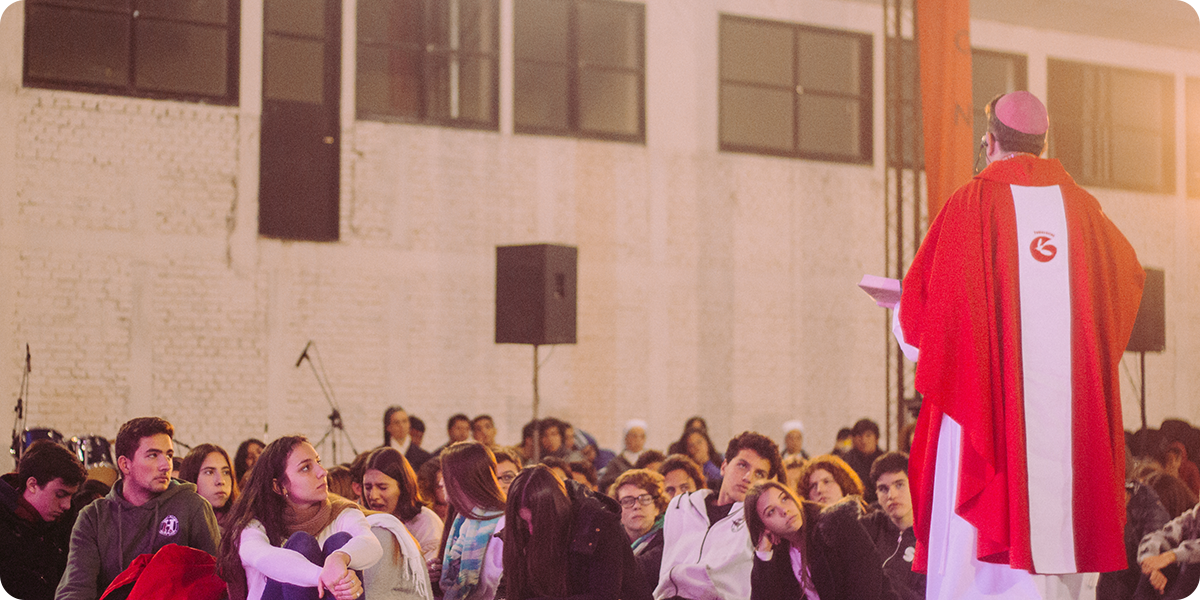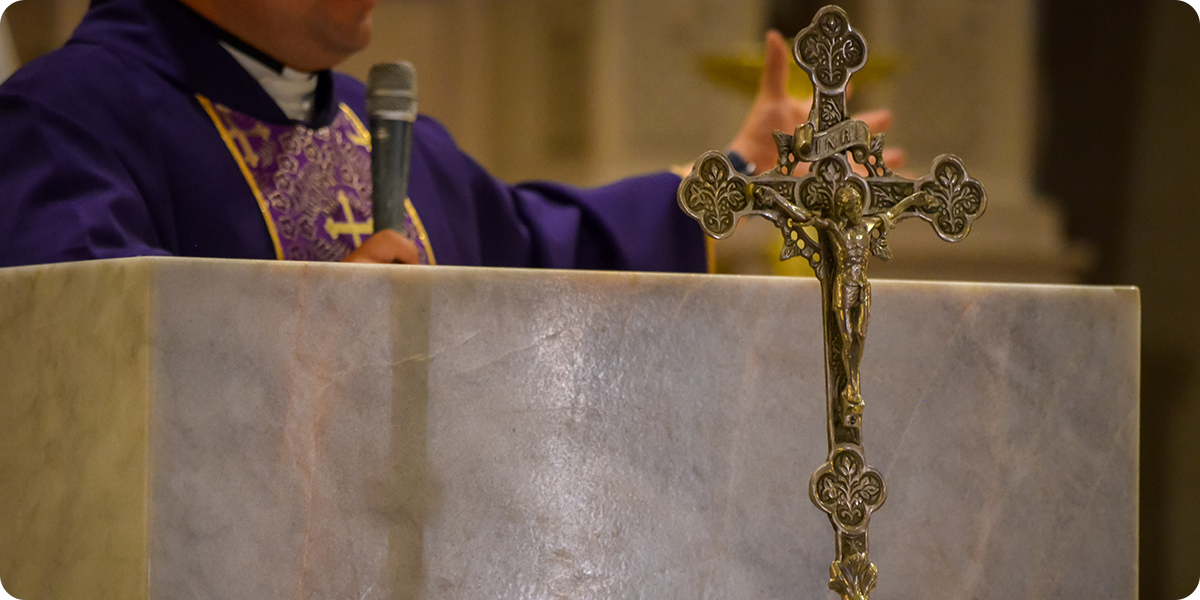

After hearing God’s Word to us in the Scriptures and especially the life and words of Jesus in the Gospel, next comes an opportunity to reflect more deeply on those words in the homily. As the Diocese of Peoria teaches, after the Gospel, we move into the “Second Half” of the Liturgy of the Word, which “consists of the homily, the Profession of Faith and the Prayers of the Faithful. These three ‘moments’ in the liturgy act as a bridge between the Liturgies of the Word and Eucharist” (A Study of the Mass, p. 9).

What is the homily exactly? “Homily” comes from a Greek word that means “explanation.” The purpose of the “homily is to break open the Scriptures and lead us in a deeper understanding of the mysteries we celebrate” (A Study of the Mass, p. 9). From the glossary of our Catechism, the homily is “[p]reaching by an ordained minister to explain the Scriptures proclaimed in the liturgy and to exhort the people to accept them as the Word of God” (CCC, p. 882). According to the New Catholic Encyclopedia, “a homily is a more or less brief, instructive discourse on a passage of Scripture wherein the spiritual lesson of the Scriptural text is made clear… It is generally to be instructive, informal, and intelligent” (p. 271). Some might say that is a tall order!

Who can give the homily? As the General Instruction of the Roman Missal states, “The Homily should ordinarily be given by the Priest Celebrant himself or be entrusted by him to a concelebrating Priest, or from time to time and, if appropriate, to the Deacon, but never to a lay person. In particular cases and for a just cause, the Homily may even be given by a Bishop or a Priest who is present at the celebration but cannot concelebrate” (GIRM, 66). The reason that only a Bishop, priest, or deacon gives the homily in the liturgy is directly tied to the proclamation of the Gospel. One of the gifts a man receives at ordination is a particular grace for the special purpose of preaching and teaching the Gospel. Although the wording is slightly different now, I recall very clearly the part of the diaconate ordination rite where the Bishop handed me the Book of the Gospels and said, “Receive the Gospel of Christ, whose herald you now are. Believe what you read, teach what you believe, and practice what you teach.” Every now and then when preparing the homily, I will think of these words which remind me that I have been chosen for this ministry. I will read through the Scriptures and recall for myself that Jesus has asked me to share these truths with God’s people, hopefully to help them understand more fully, grow in faith, and live more consistently in his love.
The General Instruction of the Roman Missal teaches, “The Homily is part of the Liturgy…for it is necessary for the nurturing of the Christian life. It should be an explanation of some aspect of the readings from Sacred Scripture or of another text from the [prayers of the Mass] and should take into account both the mystery being celebrated and the particular needs of the listeners” (GIRM, 65). So, while the homily may most commonly be about the readings used in the Mass, it would be appropriate for the preacher to also reflect on one of the prayers of the Mass. I somewhat regularly will refer to phrases in the Prefaces before the Eucharistic Prayer, especially on special Feast Days when those prayers are specific to the celebration.

Do we always have the homily? As the General Instruction of the Roman Missal says, there should be a homily at every Sunday and Holy Day Mass when there is a congregation. It is recommended on other days, especially on the weekdays of Advent, Lent, and the Easter Season, as well as on other “festive days and occasions” when more people are joining for the celebration (GIRM, 66). Next time, we will look more into the homily and how it helps serve as a link between the Liturgy of the Word and the Liturgy of the Eucharist.
1. Pray with this guidance to Timothy about preaching: “I charge you in the presence of God and of Christ Jesus, who will judge the living and the dead, and by his appearing and his kingly power: proclaim the word; be persistent whether it is convenient or inconvenient; convince, reprimand, encourage through all patience and teaching” (2 Timothy 4:1-2). Consider how the homilies you experience function to fulfill this instruction.
2. Reflect on significant homilies in your life history. Are there any memorable occasions when the message of a homily affected you? Give thanks to God for the impact of this preaching.